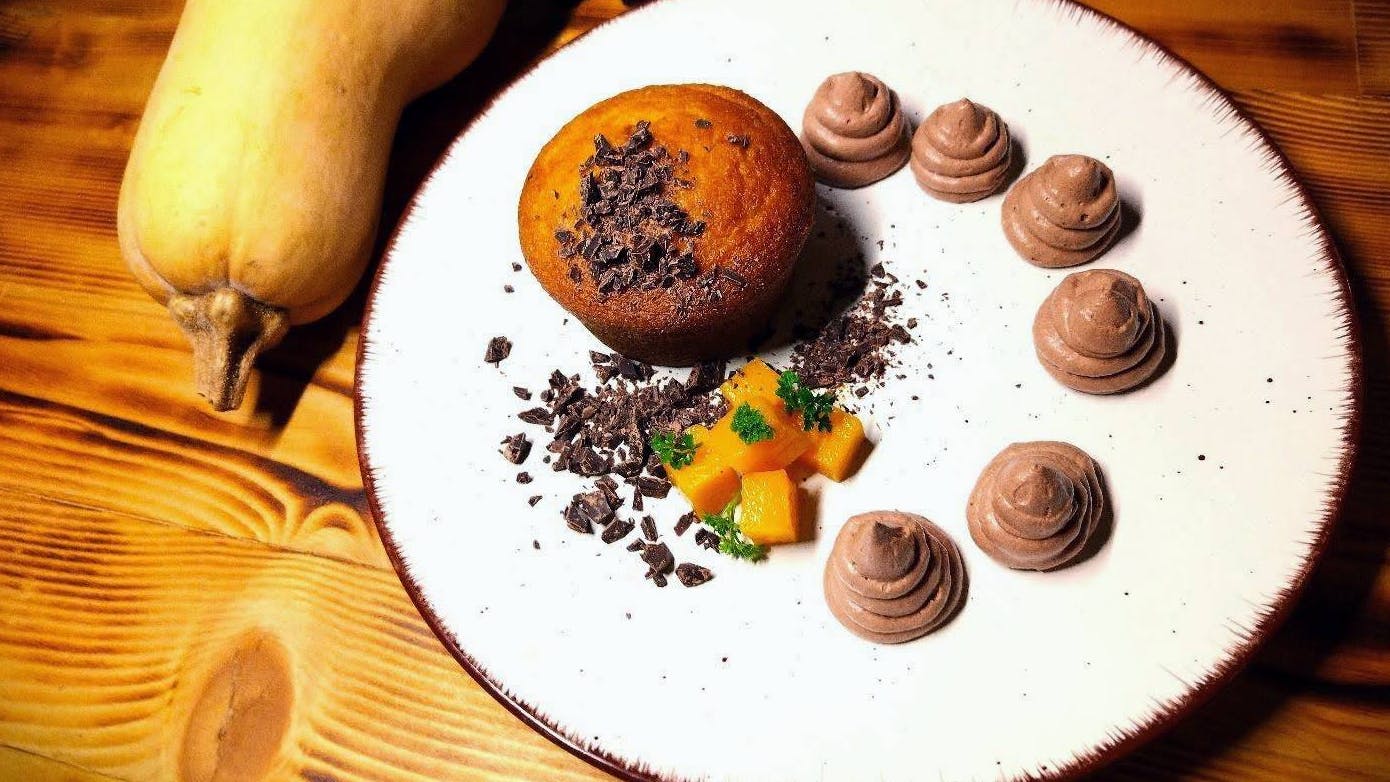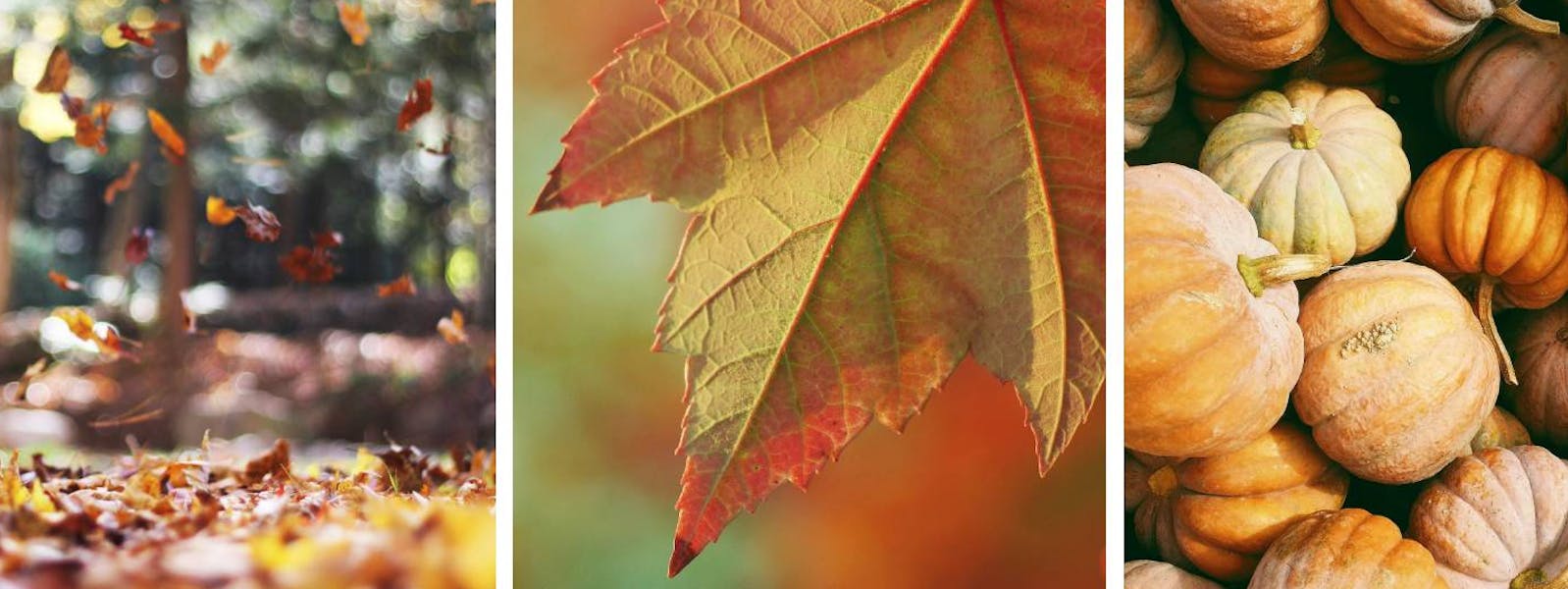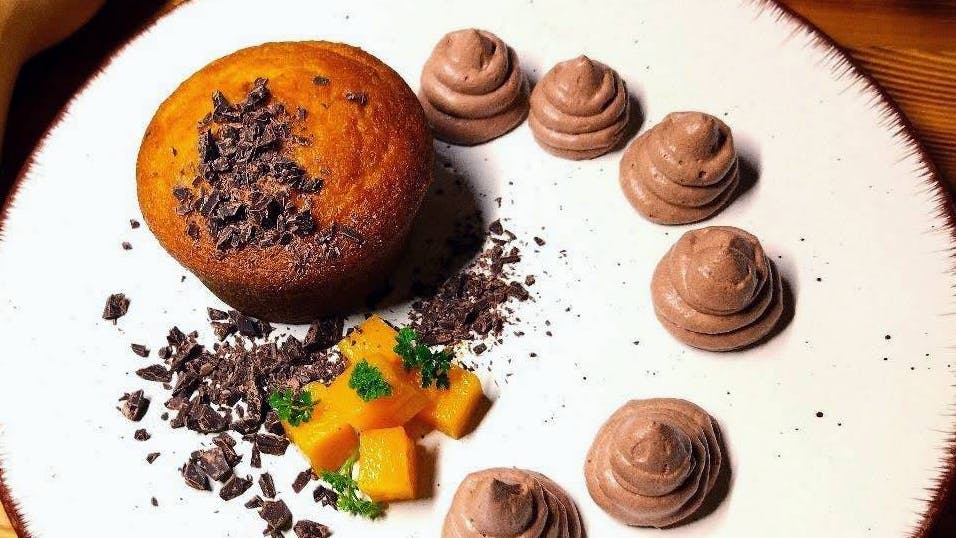

And once again, we are reaching the end of October. The days are shorter, the cold is starting to set in, but most importantly, the scariest night of the year is approaching: Halloween! Criticized by some as an imported holiday that has nothing to do with our traditions, in reality, we will discover that its roots actually go deep into the Old Continent. Be that as it may, what matters is that Halloween, with its grinning carved pumpkins and monstrous masks, is loved by everyone, probably because it gives us that harmless thrill that, in the end, helps to exorcize our fears.

To properly celebrate Halloween, we're sharing a recipe from our Cesarina Elena from Castelnuovo del Garda: a delicious pumpkin and chocolate cake that will give your 'trick or treat' an extra boost!

Pumpkin and chocolate cake
oft and delicious, a dessert that warms the heart (and the palate) on dreary autumn days
Ingredients
- 200 gr all-purpose flour
- 100 gr potato starch
- 50 gr almond flour (or finely chopped almonds)
- 200 gr granulated sugar (you can reduce the amount if the pumpkin is very ripe)
- 100 gr dark chocolate
- 3 medium eggs
- 300 gr pumpkin (raw, chopped in a mixer or grated)
- 100 gr sunflower oil (or peanut oil)
- 100 gr whole almonds
- 1 teaspoon ground cinnamon
- 1 teaspoon vanilla extract
- 1 packet baking powder
- 1 pinch of salt
Method
- Clean the pumpkin by removing the outer skin, cut it into small cubes, and chop it raw in a mixer until it becomes a coarse pulp (alternatively, you can grate it). If it turns out too watery, leave it in a colander for a while to drain the excess water.
- Toast the almonds in a non-stick pan for a few minutes, being careful not to burn them (alternatively, place them in the oven at 120°C for 5 minutes).
- Roughly chop the almonds with a knife and set aside some for surface decoration.
- Chop the dark chocolate into coarse flakes (if you prefer, you can use ready-made chocolate chips).
- Using an electric mixer at high speed, beat the eggs with the sugar, cinnamon, and vanilla extract until the mixture is light and frothy. Then add the sunflower oil and mix at low speed; add the pumpkin pulp and continue to mix gently at low speed.
- Add the sifted all-purpose flour, potato starch, baking powder, and almond flour, and gently mix with the electric mixer at low speed.
- Now add the chopped almonds and chocolate flakes, still mixing gently.
- Pour the mixture into well-buttered and floured muffin molds, filling them to 2/3 of their volume. With these quantities, you will fill 12-14 molds. If you prefer to make a cake, pour the mixture into a 22-24 cm diameter cake pan.
- Decorate the surface with the whole almonds that were set aside.
- Bake in a static, preheated oven at 170-180°C for about 10-15 minutes, depending on the oven and the size of the molds. Do the classic toothpick test: if it comes out dry, the pumpkin cake is ready! (If you opted for a cake, the baking time increases to about 40-50 minutes).
- Once baked, let the muffins cool and remove them from the molds.
- Let them rest for at least half a day: they will decrease slightly in volume, but the longer they rest, the better and softer they will be!
The Origins of Halloween in the Old Continent
Today a secular holiday, sometimes criticized as an event contrary to the principles of the Catholic religion, Halloween actually has its origins in Catholic religious practices. It is believed to have derived from the celebrations of All Saints' Day, introduced in the 7th century AD. Initially celebrated in May, All Saints' Day was moved to November 1st in the 8th century. From this point on, the practice of holding a vigil on the preceding night, October 31st, began to spread among the faithful, and it is in this custom that we can trace the origins of the modern Halloween.
Supporting this idea is the etymology of the word itself. "Halloween" is, in fact, a contracted form of "All Hallows’ Eve", where "hallow" is an archaic English term meaning "Saint". "Halloween", a word that first appeared in 1735, thus means "All Saints’ Eve".

From the Old to the New Continent and Back
Halloween, therefore, is a tradition born in the Old Continent and later transplanted to the New World following the migrations of Europeans to North America in the 1600s and especially in the 1800s when Irish and Scots sailed westward to escape famine. The holiday transformed from a religious to a secular one and, by the mid-1900s, became a public celebration with themed events and parties.
From America, thanks to films and TV shows, Halloween returned to Europe (and the rest of the world), shedding its historical roots and becoming primarily a commercial holiday. In Italy, Halloween is celebrated by 16% of the population (about 7 million people) and generates a business turnover of around 200 million euros.

The Celtic Origins of Halloween
Throughout history, the Catholic Church has often absorbed pagan festivals into its calendar, effectively "normalizing" these celebrations. This happened with Ferragosto and Christmas, for example. And it also happened with All Saints' Day. The true origins of Halloween can therefore be traced back to ancient Celtic rites, particularly the Festival of Samhain.
The Samhain Festival
The Celts were a pastoral people whose lives were marked by the rhythms of livestock: at the end of summer, they would bring their flocks back down to the valleys and prepare for winter and the start of the new year, which for them began on November 1st.

The Celtic New Year thus marked the end of summer and was celebrated during the Samhain Festival. It is no coincidence that "Samhain" derives from the Gaelic "samhuinn", meaning "summer’s end". The celebration honored the transition between the end of the warm season and the beginning of winter with its final harvest. It's no surprise that the colors of this festival were (and still are) orange, representing the harvest, and black, symbolizing the darkness of the cold season. This was the time of year when the Celts believed that the veil between the world of the living and the world of the dead became thin enough to cross. Therefore, death was a central theme of this celebration: in winter, life seems to fade, though in reality, it is merely renewing itself underground. But underground is also where the dead are found, making the overlap between Samhain and the veneration of the dead almost natural.

From Carved Pumpkins to "Trick or Treat": The Origins of Halloween’s Most Iconic Elements
Halloween is a holiday characterized by easily recognizable elements that are deeply ingrained in the collective consciousness. Let’s explore its main components and uncover their historical origins.
Scary Costumes
In this sense, Halloween is similar to Carnival, but with a more gory and dark twist. In modern times, the practice of wearing terrifying masks began in the United States in the 1900s, but its origins are much older. The Celts, during the sacrifices on October 31st, would already dress in frightening costumes by wearing animal skins, with the goal of warding off evil spirits that could return to earth on that particular day.

Trick or Treat?
Perhaps the aspect of Halloween that children love most is the famous "trick or treat?". Armed with baskets and bags, little ones dressed as monsters and witches go door-to-door collecting chocolates and candies… or playing a prank on those who are stingy with sweets. The earliest known reference to "trick or treat" comes from Canada in 1917. But, once again, its origins are much older. The custom likely has a dual origin: the practice of leaving food for the dead during the Samhain Festival and the tradition of baking so-called "soul cakes" in 15th-century England, which were treats prepared for poor children who knocked on doors asking for a cake in exchange for a prayer for the deceased.

Carved Pumpkins: The Jack o’ Lantern
Carved pumpkins with eerie grins are certainly another iconic element of Halloween. Their original purpose was simple: to scare away evil spirits. As early as the 1800s in Scotland and Ireland, there was a tradition of making lanterns by carving vegetables, especially turnips; then, when the custom crossed the Atlantic, pumpkins — more common and easier to hollow out — began to be used.

The Legend of Jack the Smith
But why are carved pumpkins called "Jack o’ lantern" in English-speaking countries? The name comes from an Irish legend. Jack, a miserly and drunken blacksmith, met the devil in a tavern.
Due to his less-than-virtuous life, his soul was already destined for the devil, but thanks to his cunning, Jack managed to save it. He convinced the devil to transform into a coin so he could afford one last drink, but the crafty blacksmith then placed the coin in his purse next to a silver cross, preventing the devil from returning to his original form. To regain his freedom, the devil promised not to take his soul for the next ten years, and Jack agreed.
After the time had passed, the devil appeared again, but before surrendering his soul, Jack made one last request: he asked the devil to fetch an apple from a tree. This was another trick: Jack quickly carved a cross into the tree trunk, trapping the devil once again. There was another negotiation, and in exchange for his freedom, the devil promised to spare Jack from eternal damnation.
Upon his death, Jack was rejected from Heaven due to his many sins, but he was also turned away from Hell because of his pact with the devil. In the end, the devil got his revenge! Jack was condemned to wander for eternity as a restless soul. To light his way, the devil threw him a burning ember, which Jack placed inside a turnip. Hence the name Jack O' Lantern, meaning "Jack of the Lantern". From that moment on, Jack roams endlessly in search of a place to rest, and Halloween is the night when he seeks shelter.
People hang lanterns outside their homes to signal to Jack's sad soul, as well as to other wandering spirits, that their house is not a place for them.
